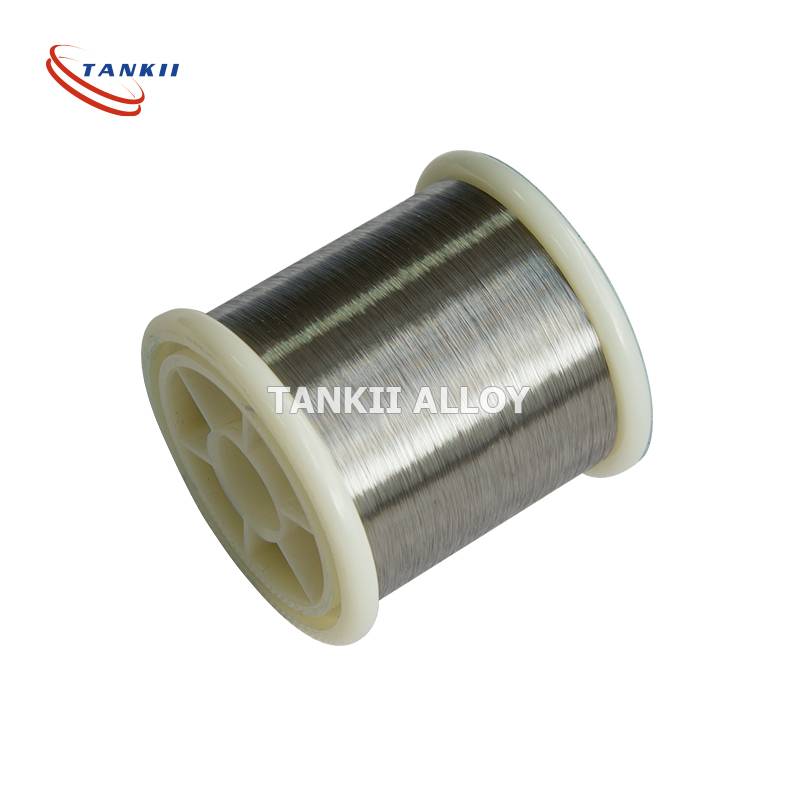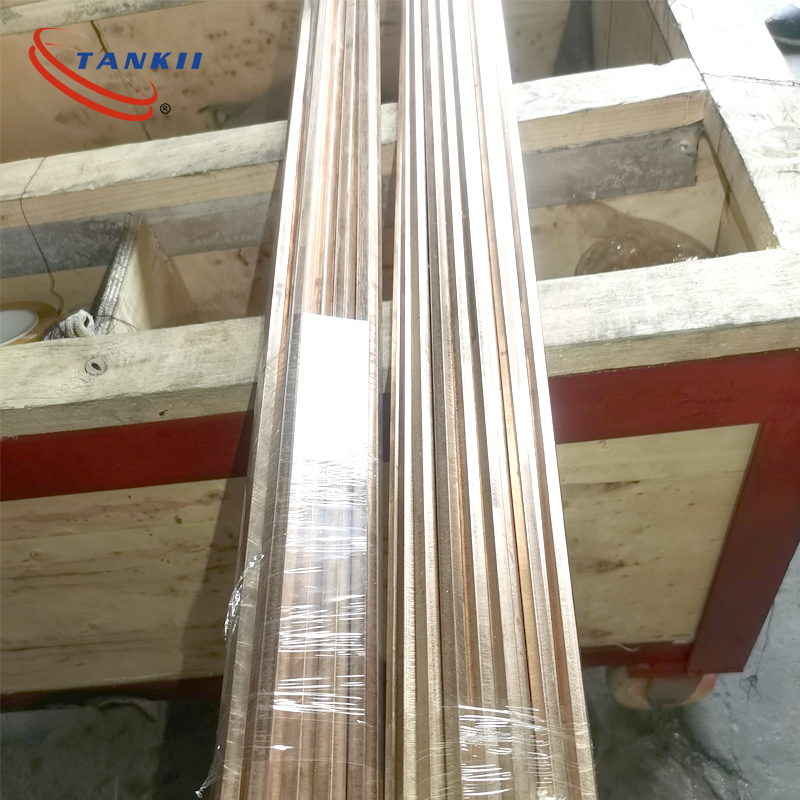Welcome to our websites!
Precision Resistance Wire Alloy 320/CuNi10 for Sensor Contacts
Copper Nickel (CuNi) alloys are medium to low resistance materials typically used in applications with maximum operating temperatures up to 400°C (750°F).
With low temperature coefficients of electrical resistance, resistance, and thus performance, is consistent regardless of temperature. Copper Nickel alloys mechanically boast good ductility, are easily soldered and welded, as well as have outstanding corrosion resistance. These alloys are typically used in high current applications requiring a high level of precision.
| Grade | CuNi44 | CuNi23 | CuNi10 | CuNi6 | CuNi2 | CuNi1 | CuNi8 | CuNi14 | CuNi19 | CuNi30 | CuNi34 | CuMn3 | |
| Cuprothal | 49 | 30 | 15 | 10 | 5 | ||||||||
| Isabellehutte | ISOTAN | Alloy 180 | Alloy 90 | Alloy 60 | Alloy 30 | ISA 13 | |||||||
| Nominal composition% | Ni | 44 | 23 | 10 | 6 | 2 | 1 | 8 | 14 | 19 | 30 | 34 | – |
| Cu | Bal | Bal | Bal. | Bal. | Bal. | Bal. | Bal. | Bal. | Bal | Bal | Bal | Bal | |
| Mn | 1 | 0.5 | 0.3 | – | – | – | – | 0.5 | 0.5 | 1.0 | 1.0 | 3.0 | |
| Max operating temp(uΩ/m at 20°C) | 0.49 | 0.3 | 0.15 | 0.10 | 0.05 | 0.03 | 0.12 | 0.20 | 0.25 | 0.35 | 0.4 | 0.12 | |
| Resisivity (Ω/cmf at 68°F) | 295 | 180 | 90 | 60 | 30 | 15 | 72 | 120 | 150 | 210 | 240 | 72 | |
| Max operating temp(°C) | 400 | 300 | 250 | 200 | 200 | 200 | 250 | 300 | 300 | 350 | 350 | 200 | |
| Density(g/cm³) | 8.9 | 8.9 | 8.9 | 8.9 | 8.9 | 8.9 | 8.9 | 8.9 | 8.9 | 8.9 | 8.9 | 8.9 | |
| TCR(×10-6/°C) | <-6 | <16 | <50 | <60 | <120 | <100 | <57 | <30 | <25 | <10 | <0 | <38 | |
| Tensile Strength(Mpa ) | ≥420 | ≥350 | ≥290 | ≥250 | ≥220 | ≥210 | ≥270 | ≥310 | ≥340 | ≥400 | ≥400 | ≥290 | |
| Elongation(%) | ≥25 | ≥25 | ≥25 | ≥25 | ≥25 | ≥25 | ≥25 | ≥25 | ≥25 | ≥25 | ≥25 | ≥25 | |
| EMF vs Cu uV/°C(0~100°C) | -43 | -34 | -25 | -12 | -12 | -8 | 22 | -28 | -32 | -37 | -39 | - | |
| Melting Point (°C) | 1280 | 1150 | 1100 | 1095 | 1090 | 1085 | 1097 | 1115 | 1135 | 1170 | 1180 | 1050 | |
| Magnetic Property | non | non | non | non | non | non | non | non | non | non | non | non | |
Write your message here and send it to us
Products categories
-

Phone
-

E-mail
-

Whatsapp
-

WeChat
Judy
150 0000 2421
-

Top












